Data lake: what is it and how to implement it
The exponential growth in data generated and collected is undeniable, and within this vast mountain of data lies knowledge that we currently lack access to. To fully leverage this incredibly valuable resource, companies must consider a robust and scalable data architecture. A data lake is a large repository designed to store almost every type of data—structured, semi-structured, and unstructured—in high volumes, providing a powerful approach to manage the ever-expanding landscape of data analytics, AI, machine learning, and big data.
With the increasing use of data across all sectors and industries, this approach enables us to process and store information from multiple sources, empowering data scientists to reveal new perspectives that guide strategic decisions. In today’s context, where connectivity is essential, robust platforms like these are key to transforming unstructured data into precise and actionable analyses.
In this article, we will explore how this solution stands out as a transformative tool, its advantages and challenges, and discuss its impact on data management and information handling.
What is a Data Lake?
A highly flexible and scalable data repository, designed to manage a wide range of information originating from various sources. Unlike traditional databases, like data warehouses, which require data to be organized before storage, this approach employs the concept of “schema on read,” where data structuring occurs only when accessed, meeting the user’s specific needs.
According to Gartner, these repositories store data assets in their original forms, preserving copies almost identical to or exactly as they were generated. This approach facilitates maintaining data in its raw state, allowing access and analysis without the need for prior transformation or structuring.
João Gutheil, Data Specialist at Meta IT, explains: “These repositories were prepared to handle the volumes and varieties of data that traditional data warehouse solutions couldn’t efficiently manage.”
Data Lake vs. Data Warehouse
To understand the innovation brought by these technologies, it is essential to clarify some fundamental differences. While data warehouses require data to be structured when stored, the new approach allows data to remain in its original format, offering substantial flexibility for consumption. This adaptability is vital for managing and processing large data volumes and developing genuinely innovative data products. “In modern data solutions, it’s possible to incorporate a data warehouse concept into the data lake, storing structured data in a way similar to Excel spreadsheets with organized rows and columns. This approach is known as a delta lake,” explains Gutheil.
The Data Lake Revolution
As unstructured data and multiple information sources grow exponentially, there is a need for more scalable and efficient solutions. Before data lakes, organizations faced significant challenges in absorbing and analyzing information due to the rigidity of traditional systems, which required prior structuring and were often customized for specific cases.
This approach offers an integrated and expandable solution, allowing data to remain in its original state and be organized as needed, simplifying the combination of information from different sources.
Gutheil emphasizes, “The main innovation is the ability to store and process data in its raw state and structure it as needed, representing a significant advantage for advanced analytics.”
Advantages of Data Lakes
Data Lakes offer numerous benefits for companies working with different types of data. “The first benefit we observe when implementing a Data Lake is the reduction of so-called ‘data silos.’ This allows information to be accessible and integrated across the organization,” Gutheil highlights.
Key benefits include:
- Scalability — the system is designed to accommodate high volumes of data, easily expanding as needed.
- Flexibility — by accepting structured, semi-structured, and unstructured data formats, the approach allows a wide range of explorations that would be challenging with more rigid systems. Gutheil explains, “We can extract value from unorganized data, like PDF files, images, audio, and video, and cross-reference them with structured data if necessary.”
- Cost-effectiveness — compared to traditional solutions, it provides a more economical option for storage and processing, thanks to its simplified architecture. Gutheil adds, “Additionally, we can optimize computing costs depending on demand and data volume.”
- Analytical Capability — the environment enables detailed processing and the implementation of machine learning models to optimize strategic decisions. “It not only supports large data volumes but also facilitates advanced analyses, allowing companies to gain deeper and more actionable insights,” observes Gutheil.
These benefits show how this approach can transform data management, providing more efficient integration and richer exploration of information, bringing significant value to companies.
Challenges of Data Lakes
While data lakes offer several advantages, they also face significant challenges that need to be overcome to ensure effective performance. Among these challenges are:
- Security — protecting sensitive data is crucial. Robust measures, such as encryption and authentication, are essential to maintain the accuracy and consistency of stored data.
- Data Quality — the variety of sources and formats can lead to inconsistencies. To address this problem, it is essential to adopt cleaning and validation techniques that ensure data accuracy and integrity.
- Governance — establishing clear governance policies is crucial to ensure data compliance and integrity, preventing disorganization and improper use of information.
- Management Complexity — especially in environments with large data volumes and multiple users, orchestration tools and metadata catalogs are essential for efficient management.
For a data lake to be genuinely effective and provide concrete benefits, it is essential to address and resolve these challenges. Digital transformation can play a crucial role by providing solutions to optimize security, governance, and data management. Embracing innovation as a culture is essential to aligning the data strategy with organizational needs and achieving impactful results.
Application examples
Data lakes have the potential to transform business operations by integrating and processing information from various sources in a fast and efficient manner. For example, a company can use these platforms to adapt offers and recommendations based on actual customer behavior, resulting in more precise interactions and better-informed decisions.
Besides enhancing personalization, these systems are crucial for optimizing supply chain management. They allow delays to be predicted and logistical bottlenecks identified, providing detailed insights that improve operational efficiency. Gutheil illustrates this capability with a practical example: “Imagine a company that sells flooring and coatings. In the factory, you have product images, like photos of floors and coatings. In retail, these images are integrated with sales data, allowing sellers to view products during transactions and manage stock or even impress clients during quotes.”
Gutheil also highlights how these platforms can improve intelligent search mechanisms. “You can search for products with specific descriptions, such as ‘gray-tone flooring measuring 1.20 by 1.20 for pool use.’ An application filters and presents only the items that meet these criteria, combining product photos with structured data from the sales system.”
How to create a Data Lake
Building a data lake involves several essential steps to ensure its effectiveness and security. The process begins with understanding data sources, the project’s actual goal, and configuring a robust environment to collect raw data from various sources and formats.
- Project goal
First, it’s essential to understand the project’s goal and the company’s needs. Identify the data sources and domains to be migrated to the data lake, establishing the priority order. For example, the sales data domain may be the first to be handled. - Data ingestion
The next step is to define how the information will be collected and processed. This includes integrating various sources, such as database systems, file repositories, and APIs. The choice of suitable ingestion technology will depend on the organization’s specific needs and may involve tools like Apache Kafka, AWS Kinesis, Airflow, or Google Cloud Pub/Sub. - Data storage
After data ingestion, the next step is ensuring efficient and scalable storage. The system must be able to retain all data types in their raw form. For this, cloud platforms such as AWS S3, Google Cloud Storage, and Azure Data Lake Storage stand out, offering scalability and a cost-effective storage solution. - Orchestration
It’s the process of coordinating and automating the data flow through various stages of a data transformation process. Imagine a pipeline as an assembly line: orchestration is the system that controls the task order, ensures each step is executed correctly and on time, and handles possible failures or errors. Tools like Airflow can be an excellent choice for this type of task. - Cataloging and governance
One of the most critical aspects of creating a data repository is data cataloging and governance. Gutheil emphasizes the importance of establishing data catalogs and ensuring that sensitive information is protected by encryption or masking. Additionally, it’s essential to implement governance policies that define clear rules for data access, use, and sharing, preventing disorganization and improper use. Creating dashboards to monitor and manage these elements is a recommended practice to ensure the system’s effectiveness and security. - Security and privacy
Ensuring the security and privacy of stored data is essential. This involves implementing encryption for data both at rest and in transit, as well as masking sensitive information. Gutheil suggests periodically resetting passwords and performing automatic access audits to maintain a secure environment. Security also requires defining strict access permissions, ensuring only authorized users can view confidential data.

Best practices and future tools
As data repositories evolve, emerging technologies like artificial intelligence and machine learning become increasingly relevant for optimizing the consumption and management of stored data. Meta’s expert anticipates that these technologies will play a crucial role, facilitating the creation of “smart” data pipelines and enhancing environment management.
Transform your data into quick and effective insights with Azure Data Lake Architecture
For companies using the Microsoft platform, Azure offers a robust solution for storing and processing large volumes of information. Designed to integrate and manage this information, the system leverages Microsoft’s cloud infrastructure, providing scalability and flexibility ideal for optimizing strategies and operations.
Gutheil highlights the importance of cloud computing in creating and maintaining this type of system: “The essential component is cloud infrastructure — whether AWS, Azure, or Google Cloud. Without it, implementing an effective Data Lake solution becomes impossible.”
The Meta IT expert also emphasizes the need for appropriate tools to handle and explore the information. “It’s crucial to have software that allows efficient and nearly transparent work with the data. An example is Databricks, with whom we have just formed a partnership, which facilitates the creation of the data architecture. Additionally, we need tools that allow exploring and extracting knowledge from the data lake, like Tableau or Power BI.”
Transform data into action
Modern data repositories represent a revolution in how organizations store and explore information. Capable of handling large volumes of raw data and offering flexibility to integrate various sources, they present a powerful solution to face big data challenges.
However, Gutheil warns of the risks of a superficial approach to data management: “Just as the lack of an aligned organizational culture can harm a company, an inadequate data culture can create significant stress in business areas. It’s crucial to establish a solid foundation to ensure data is well-managed and used effectively,” he notes.
He also emphasizes the importance of having specialized professionals for successful implementation: “To implement a data repository or develop a data culture, it’s essential to seek professionals with the right training and experience.”
Meta: experts in Digital Transformation
With the right strategy and guidance, data repositories can provide valuable insights, fostering innovation and enhancing decision-making. Our team is here to guide you through building, scaling, and optimizing your data lake to suit your business needs. Ready to transform your data strategy? Contact us today to learn how we can help.

